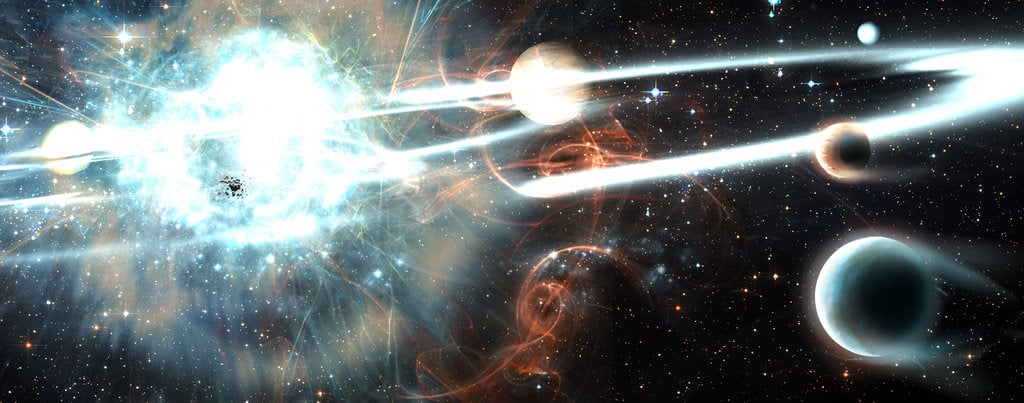Hypervelocity stars have been observed traversing the Galaxy at extreme velocities (700 km/s), but the mechanisms that give rise to such phenomena are still debated. Astronomer Thomas M. Tauris
argues
that lopsided supernova explosions can eject lower-mass Solar stars from the Galaxy at speeds up to 1280 km/s. "[This mechanism] can account for the majority (if not all) of the detected
G/K-dwarf hypervelocity candidates
," he said.
Several mechanisms have been proposed as the source for hypervelocity stars, and the hypotheses can vary as a function of stellar type. A simplified summary of the hypothesis Tauris favors begins with a higher-mass star in a tight binary system, which finally undergoes a
core-collapse supernova
explosion. The close proximity of the stars in the system partly ensures that the orbital velocities are exceedingly large. The binary system is disrupted by the supernova explosion, which is lopsided (asymmetric) and imparts a significant kick to the emerging
neutron star
. The remnants of supernovae with massive progenitors are neutron stars or potentially a more exotic object (i.e., black hole).
Conversely, Tauris noted that the aforementioned binary origin cannot easily explain the observed velocities of all higher-mass hypervelocity stars, namely the B-stars, which are often linked to an ejection mechanism from a binary interaction with the supermassive black hole at the Milky Way's center.
Others have proposed
that interactions between multiple stars near the centers of
star clusters
can give rise to certain hypervelocity candidates.
[caption id="attachment_118897" align="aligncenter" width="350"]
Some astronomers argue
that certain hypervelocity stars can stem from interactions in dense star clusters (image credit:
NASA, ESA, and E. Sabbi (ESA/STScI)
)[/caption]
There are several potential compact objects (neutron stars) which feature extreme velocities, such as B2011+38, B2224+65,
IGR J11014-6103
, and B1508+55, with the latter possibly exhibiting a velocity of 1100 km/s. However, Tauris ends by noting that, "a firm identification of a hypervelocity star being ejected from a binary via a supernova is still missing, although a candidate exists (HD 271791)
that's being debated
."
Tauris is affiliated with the
Argelander-Institut für Astronomie
and Max-Planck-Institut für Radioastronomie. His findings will be published in the forthcoming March issue of the
Monthly Notices of the Royal Astronomical Society
.
The interested reader can find a preprint of Tauris' study on
arXiv.
Surveys of hypervelocity stars were published by
Brown et al. 2014
and
Palladino et al. 2014
.
 Universe Today
Universe Today
